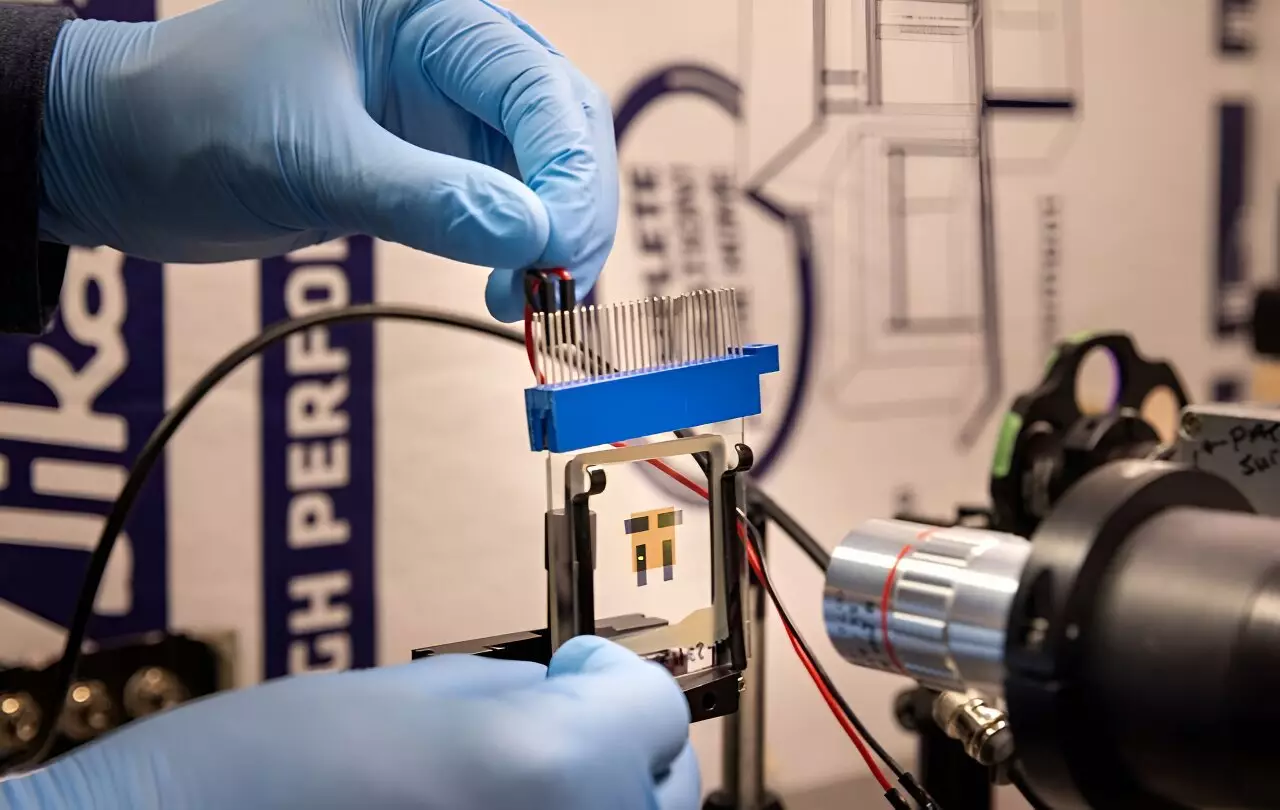The future of night vision technology may be on the brink of a significant transformation thanks to a new development in organic light emitting diode (OLED) systems, as highlighted by researchers from the University of Michigan. This innovative advancement paves the way for lightweight, cost-effective alternatives to traditional night vision goggles that are cumbersome and heavy. Published in *Nature Photonics*, this study reveals promising enhancements in night vision capabilities that could fundamentally alter their application in various fields, from military operations to personal safety.
To fully appreciate the impact of this new OLED technology, it is essential to understand how conventional night vision systems operate. Traditional devices utilize image intensifiers that rely on a complex chain of processes to convert near-infrared light into visible light. The method initiates by capturing incoming infrared light and transforming it into electrons. These electrons then travel through a vacuum towards a microscopic disc, colliding with numerous tiny channels along their path. As they strike these walls, they produce thousands of new electrons that ultimately strike a phosphorescent screen, creating visible light. Such devices amplify incoming light by a staggering factor of about 10,000, enabling users to see in near-total darkness. However, their intricate design necessitates substantial bulk, high voltage, and a vacuum layer, which detracts from user comfort and mobility.
The suggested OLED-based technology is poised to replace these conventional systems by integrating a photon-absorbing layer capable of converting infrared light directly into electrons. This process is followed by a five-layer OLED stack which subsequently transforms these electrons into visible light photons. One remarkable aspect of this new approach is its capacity to amplify light by over 100 times within an ultrathin layer of less than one micron thick, making it significantly more user-friendly compared to traditional models. Chris Giebink, a key researcher in this project, notes that this new design could enable even greater levels of amplification through optimization.
One enticing element of the OLED system is its low voltage operation. This characteristic can drastically reduce energy consumption, thereby extending the battery life of devices that utilize this technology, making OLED-based night vision systems not only practical but also economical for prolonged use. Such improvements could significantly benefit users who depend on efficient, lightweight devices for ongoing night vision needs, such as law enforcement officials, security personnel, or outdoor enthusiasts.
Beyond functionality, this new OLED technology showcases an intriguing phenomenon known as hysteresis, which allows the device to ‘remember’ previous light inputs. When illuminating the device, it not only generates light but retains a memory of past illumination, causing it to continue emitting light even after the source is turned off. This unusual behavior sharpens the potential versatility of OLEDs beyond mere night vision; it may open avenues for applications in computer vision systems, mimicking the operation of biological neural networks.
Raju Lampande, a lead author of the study, points out that the results of this research demonstrate the first instance of high photon gain in a thin-film device, which could be leveraged for improved image processing capabilities. Unlike current systems that rely on external computing units, these OLEDs may eventually manage input image interpretation on their own, thereby offering a more integrated approach to processing visual information.
Furthermore, the researchers utilized readily available materials and established manufacturing methods in creating the OLED device. This aspect not only enhances the cost-effectiveness of the technology but also increases its scalability for future applications, allowing a wider audience to access the benefits of this advanced night vision system.
The breakthrough in OLED technology championed by the researchers at the University of Michigan offers promising alternatives to bulky night vision goggles that have long dominated the field. With their lightweight design, improved amplification of light, and potential applications in computer vision, these OLEDs have the capacity to redefine how we experience and interact with our environments during low-light conditions. As integration into commercial products approaches, we may soon witness a new standard in night vision technology that delivers enhanced user comfort, efficiency, and functionality—all built on the foundation of cutting-edge OLED advancements. The future indeed looks bright for those navigating the darkness.

